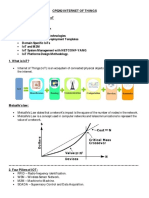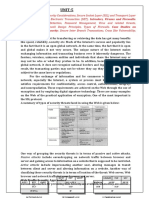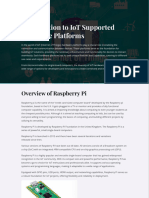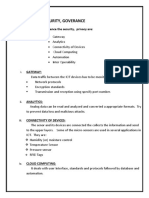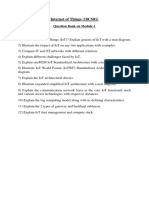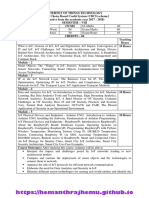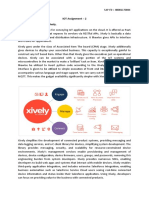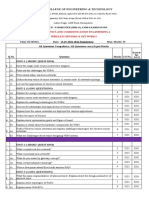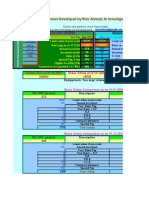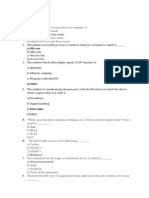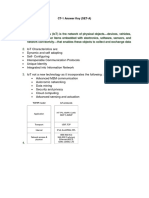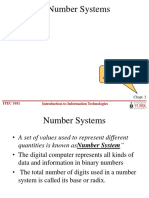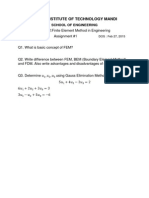0% found this document useful (1 vote)
1K views37 pagesCourse Notes-Unit 5
This document outlines the key concepts in developing an Internet of Things (IoT) system, including IoT design methodology, physical devices and endpoints, cloud offerings, and messaging platforms. It discusses IoT design steps, the Raspberry Pi development board, interfaces, programming in Python, and cloud services from Amazon Web Services and Xively. Popular IoT messaging platforms like WAMP and SkyNet are also introduced.
Uploaded by
Safa MCopyright
© © All Rights Reserved
We take content rights seriously. If you suspect this is your content, claim it here.
Available Formats
Download as PPT, PDF, TXT or read online on Scribd
0% found this document useful (1 vote)
1K views37 pagesCourse Notes-Unit 5
This document outlines the key concepts in developing an Internet of Things (IoT) system, including IoT design methodology, physical devices and endpoints, cloud offerings, and messaging platforms. It discusses IoT design steps, the Raspberry Pi development board, interfaces, programming in Python, and cloud services from Amazon Web Services and Xively. Popular IoT messaging platforms like WAMP and SkyNet are also introduced.
Uploaded by
Safa MCopyright
© © All Rights Reserved
We take content rights seriously. If you suspect this is your content, claim it here.
Available Formats
Download as PPT, PDF, TXT or read online on Scribd
/ 37

